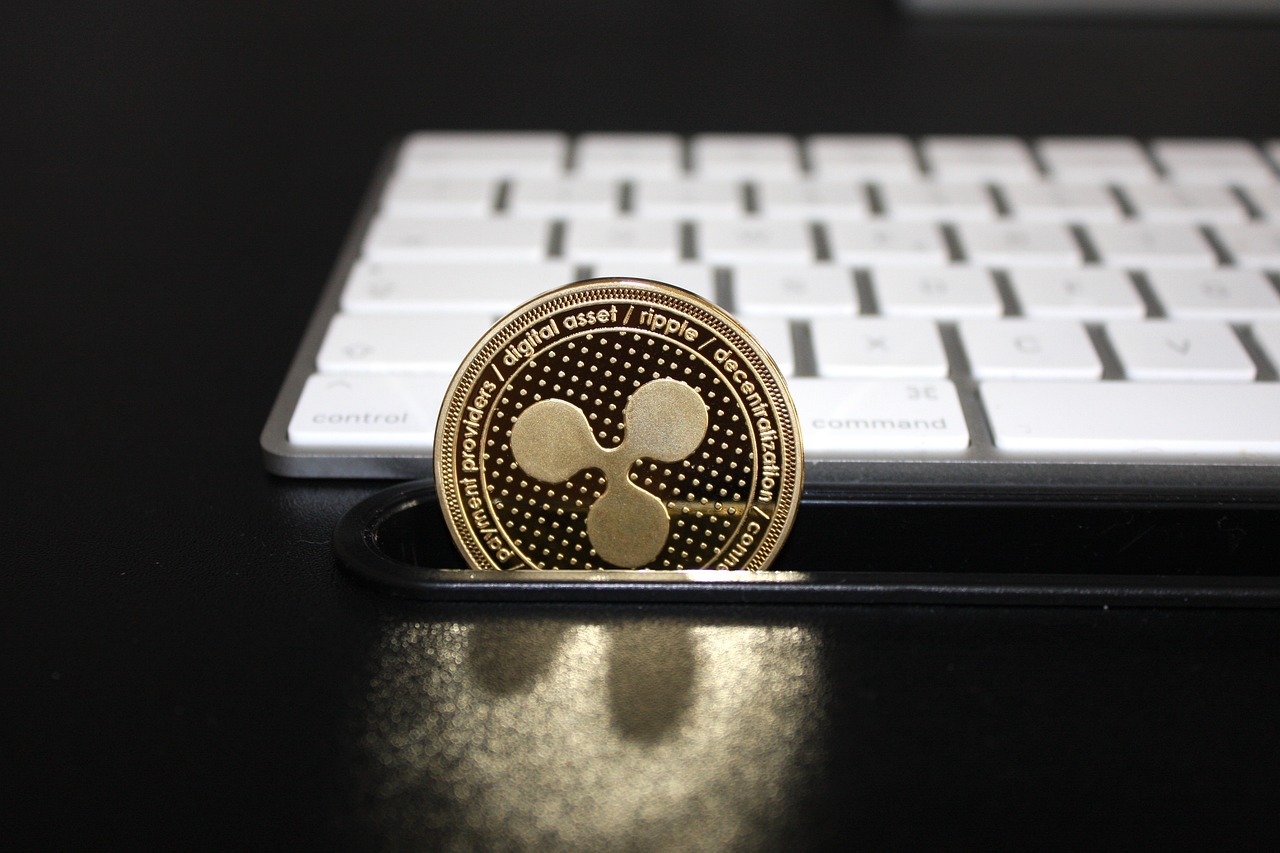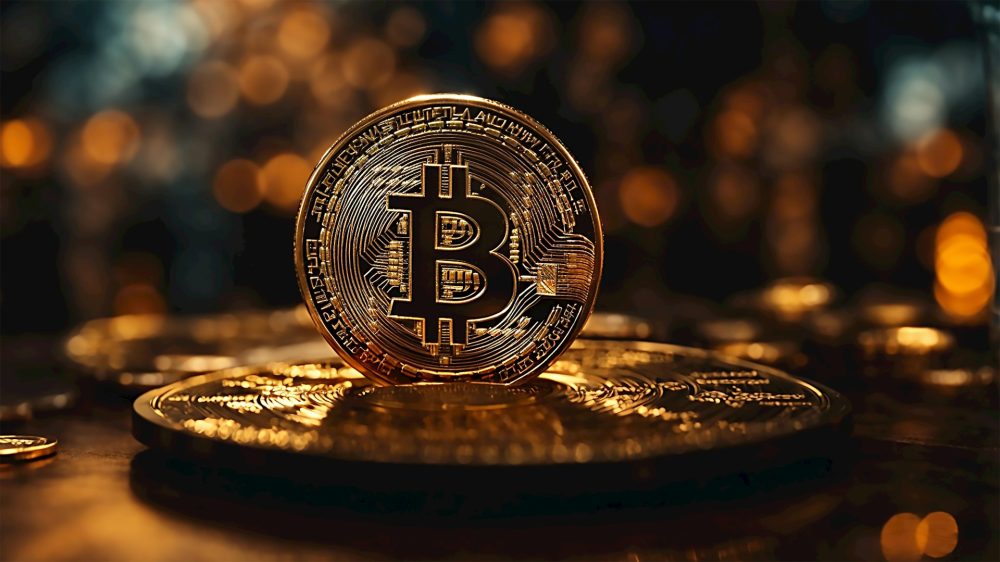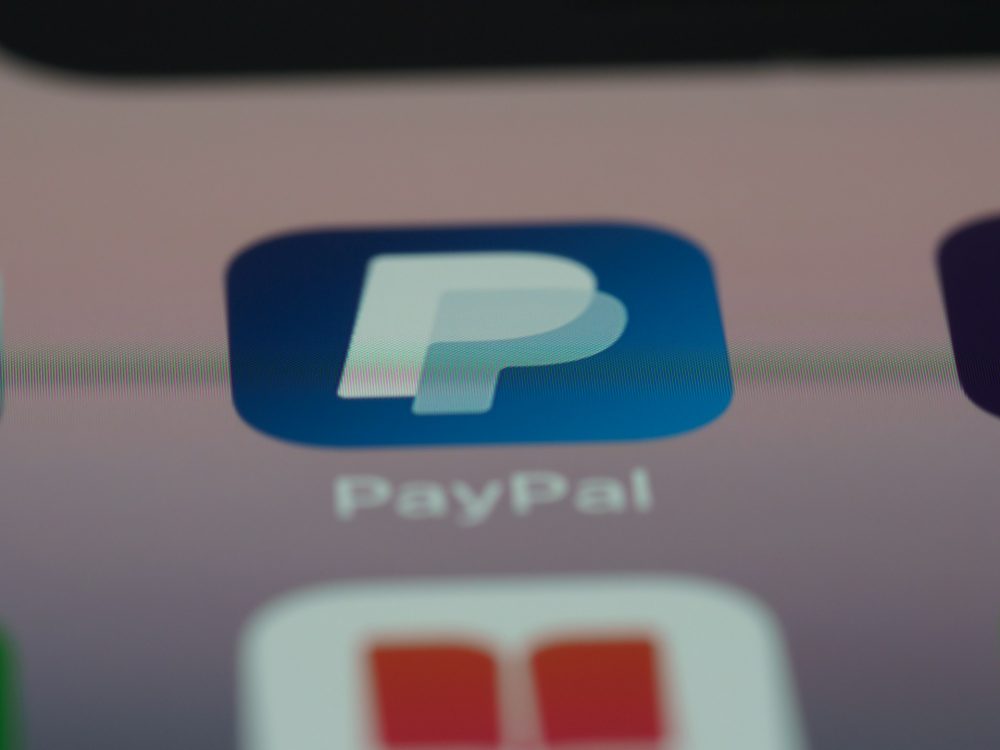Crypto
The Hidden Truth Everyone Is Missing: SurancePlus, Zoniqx, and the Future of RWA Tokenization
There’s something massive happening in plain sight that nobody’s fully understanding: RWA tokenization. That’s despite the fact that BlackRock is throwing $10 trillion at it as institutional giants like PwC pair up with innovative startups in the space like Zoniqx. Meanwhile, issuers like Oxbride Re’s SurancePlus are providing investors with ungodly returns. This should clear things up.

Recently, my family and friends (or, at least, the small handful who actually read my articles) have been asking me the same question.
“Michael, I don’t get it. You’ve been talking a lot about this Real World Asset (RWA) tokenization thing lately. You say it’s going to be huge. But why is it such a big thing?”
At first, my standard response was always to just highlight the important bits from past articles. You know. Things like BlackRock committing $10 trillion to RWA tokenization. Or how blockchain democratizes access to new asset classes like the reinsurance tokens issued by SurancePlus, a subsidiary of Oxbridge Re [NASDAQ: OXBR]. Or how the holy trinity of Zoniqx, PwC, and Oxbridge Re is bigger news than AI.
But it was always at this point most of my family would interject, “But I still don’t get it!”
So instead, I started replying, “Think of it like this. You have an issuer of an ultra-lucrative asset class (Oxbridge Re’s SurancePlus subsidiary just netted investors a 49% return). Now you add in a platform (Zoniqx) that’s about to massively democratize access to that asset. And then you have some very big institutional partners like PwC buddying up with that very platform. Doesn’t that sound like something big?”
“Yeah, sort of,” they’d respond.
But then they’d ask, “But why does it have to be crypto? And besides, I looked into this Zoniqx company and saw they’re also partnered with Ripple (XRP)… and aren’t they having problems with the SEC?”
“Well, yes, but no, you’re getting things mixed up,” I’d respond. “It’s complicated… but also kinda simple… here, I’m gonna go write another article. Get back to me later if you still have questions.”
And thus, this article was born.
An article that should clear up any remaining confusion around the future of Ripple, Zoniqx, and why this is all such a big deal for RWA token issuers like Oxbridge Re’s [NASDAQ: OXBR] SurancePlus subsidiary.
Ripple Is Dominating RWA Tokenization — What it Means for Zoniqx and SurancePlus
Right off the bat, let’s get one thing straight — no matter what happens with the Ripple token (XRP), it’s not going to impact Zoniqx, or SurancePlus and its reinsurance tokens. (**Alright, there might be some impact… see my note at end of the article.)
The simple fact is, Ripple, the “token”, is a bit different from Ripple, the “ledger”, which is fast becoming the go-to for RWA tokenization.
If you don’t know what this means, here’s a simple way of thinking about it.
A Quick Ledger vs Token Example
Imagine you have a business and you sign up with QuickBooks to keep a ledger of your business activity.
That’s a little like using XRP Ledger. All you’re doing is using the underlying technology to record a bunch of information. (But maybe don’t use XRP Ledger as a QuickBooks alternative… they’re not designed to do the same thing.)
Thus, so long as you’re using it like that — as a ledger — the SEC couldn’t care less.
But now let’s say QuickBooks gets ambitious and decides to use their software to mint their own token. That is, to make a record of how many tokens they created out of thin air. And then they use their software to record who’s buying and selling it.
Let’s call it QuickQoin, just for fun.
At this point, the SEC might start to have a problem. That’s because by offering “QuickQoin” to investors, they just potentially created a security — and an unregistered, unregulated one at that.
Do you see the difference here? QuickBooks is the ledger. QuickQoin is the security.
And this is a little like the difference between XRP the “token”, and XRP the “ledger”.
The former’s getting heat from the SEC. The latter’s no different from a wet paper bag as far as the feds are concerned.
Now wait… I know what you’re thinking here.
Isn’t SurancePlus going to be using XRP Ledger to mint tokens now it’s partnered up with Zoniqx? Isn’t this a bit like using QuickBooks to mint QuickQoins?
Well, yes, and no.
First things first — unlike the XRP token or our imaginary QuickQoin, the SurancePlus reinsurance tokens are already fully compliant with SEC regulations. Specifically, they meet the full requirements for a Reg D offering for US investors, and Reg S for international investors.
Secondly, the SurancePlus tokens are actual, “Real-World Assets” (RWA). Unlike “crypto”, these are old-school reinsurance contracts that existed in the real world well before crypto was even a thing.
The only thing that changed is using “crypto” to “tokenize” what is otherwise a very normal, real-world security. Hence the name RWA tokenization.
In this way, using XRP Ledger to issue tokenized reinsurance contracts is not that much different in principle from using QuickBooks to track inventory and issue invoices.
But that’s in principle.
In practice, RWA tokenization is a whole other beast.
So Why’s RWA Tokenization Such a Big Thing?
Okay, so I’m going to start with a warning here — I’m about the talk about the oldest cliche in the crypto handbook.
Democratization.
But here’s what I’m going to do differently so my friends and family can finally get it — I’m not just going to give the usual empty “democratization” spiel.
Instead, I’m going to give real, concrete examples of how RWA tokenization is truly democratizing access to products like SurancePlus’s reinsurance tokens.
Really.
If you don’t “get it” by the end of this, then I’ll finally accept that maybe I’m wrong about how big RWA tokenization is.
1) Driving the Cost of Issuing and Trading Assets to Zero
Let’s start with the big problem with the old way we used to issue and trade securities — old-school stock exchanges.
Now, I’m sure we all know that most public stock exchanges are private, for-profit companies. But, for those who didn’t know, now you know… go forth and buy shares in Nasdaq [NASDAQ: NDAQ] (the company) on the Nasdaq (the exchange)… or don’t.
This already throws up our first “democratization” problem.
These “proprietary” exchanges hold such a monopoly over public markets that they can more or less charge whatever fees they want.
And boy oh boy do they charge.
For example, let’s take a humble small-cap company that wants to list on the Nasdaq CM. They’re already looking at a $5000 application fee just for the privilege of submitting some paperwork.
Then, if Nasdaq approves, there are entry fees and ongoing “all-inclusive listing fees” that run at tens of thousands of dollars a pop. And then there are the ongoing administrative and other assorted junk fees just to top it all off.
All told, that means the total cost of listing over the course of, let’s say, 3 years, can easily run into the multiple hundreds of thousands of dollars, even for a small cap at the lower end of things.
Now let’s think about how this plays out with SurancePlus’s reinsurance tokens.
The first issuance, the DeltaCat Re token, was capped at $5 million. The second issuance, the EpsilonCat Re token, was capped at $10 million. Both of these are separate “listings”.
As such, if Nasdaq would even list either of these offerings, it would have already eaten into multiple percentage points of the total value just with its exorbitant application, listing, and admin fees.
And that’s just the beginning.
Nasdaq, after all, is a two-sided marketplace.
So now let’s talk about how it milks the other side of this marketplace — the investors.
Take something really basic. For example, intraday retail equities flow — you know, data about how much retail traders are buying and selling.
If you want access to that data, too bad. That’s a premium institutional product over at Nasdaq, meaning it’ll cost you a very pretty penny to access it.
And, if you somehow access that data via a third party, chances are, you’re still paying in one way or another. That’s because Nasdaq is charging whoever’s giving you access multiple fees, like per-terminal access fees, monthly membership fees, and a thousand other junk fees to boot.
Now compare this with XRP Ledger — an open-source, public blockchain.
As an open-source product, the cost to use it is practically zero.
Dito for the cost of trading any tokens issued on the XRP Ledger.
And, as it’s a public blockchain, the cost to view whatever data you want is also, practically zero.
2) Solving the Trust Problem
Now, of course, you could theoretically achieve cut-price asset listings with the same old tech that’s been used by old-school exchanges for decades.
And, theoretically, old-school exchanges could expand their product offering to open up access in the same way blockchain and RWA tokenization have.
But that would be a little like telling old-school telcos back in the day to give their customers access to cheaper alternatives like VOIP. In other words, if it cuts profit margins, it’s not gonna happen until there’s a major disruption in the marketplace.
And that’s where the new wave of crypt innovators comes in.
Now, usually, this would cause a bit of a trust issue. After all, while you can probably trust Nasdaq, the NYSE, or any other large exchange to properly manage your trades and not to tamper with anything, you can’t say the same about every “move fast and break things” startup that bursts onto the scene.
Tokenizing RWAs using blockchain, however, solves this trust problem. With everything recorded on an immutable blockchain that’s out in the public for anyone to see, it’s practically impossible for anyone to tamper with anything.
Long story short, tokenizing RWAs on the blockchain changes the game completely.
Low costs mean it’s now feasible to list just about any security.
And open source, open access means everything’s out there for anyone to access and use.
See why this new wave of RWA tokenization is such a big deal by now?
Putting This Into Context: Why the SurancePlus Partnership With Zoniqx Is Huge
Now, for all this talk about democratization through public trust and zero-cost asset listing, there are a couple of holes we still need to fill in.
The biggest is the simple “technology” cost.
Even if something is technically free, it doesn’t exclude the fact there are still large implementation, infrastructure, and ongoing support costs.
And then there’s also the problem that comes with all the ancillary services needed to manage the full lifecycle of an asset.
A really basic example of this is the dozens of exchanges that cropped up to facilitate the buying and selling of Bitcoin and other cryptocurrencies.
Technically, they weren’t necessary — anyone with a computer, the technical know-how, many hours of free time, and the willingness to network with other Bitcoin buyers/sellers could trade Bitcoin without an exchange.
And that’s exactly how people bought and sold Bitcoin back in the old days.
And that’s kinda how SurancePlus issued its first two rounds of reinsurance tokens — with a little bit of steam power.
But we all know that approach doesn’t scale. Most people just don’t want to operate like that. There’s simply too much time, admin, and technical know-how involved.
In the case of cryptocurrencies, that’s where players like Coinbase [NASDAQ: COIN] stepped in and truly opened up the market to anyone with a bank account.
And that’s more or less where Zoniqx steps in — to provide basically everything that’s needed to take SurancePlus’s tokens out of the crypto dark ages and into their rightful, scalable future.
To steal the words from Zoniqx, they provide a “comprehensive, compliant, and regulated solution for asset tokenization, encompassing all phases from issuance to liquidity and trading.”
Putting Two and Two Together
Now, in case it’s not starting to become clear just how big all of this is, let me spell it out in another way.
In their first year, SurancePlus’s DeltaCat Re tokens netted investors a 49% return. Now their second issuance, the Epsilon Cat Re token, is on track for a similar result, with a target 42% annualized return.
Now, think about what happens when you go out and massively democratize access to something like this with a platform like Zoniqx.
And then think about what happens when old institutional heavyweights throw their weight behind the whole movement, whether it be BlackRock’s $10 trillion pledge or PwC’s partnership with Zoniqx.
Just in case you’re lost for words by now, here are a few adjectives that might help you out: huge, massive, colossal, gargantuan…
Take your pick.
Either one of them describes the future of RWA tokenization and the outcomes for the investors and companies getting involved.
** Final Note: If all goes well, then XRP probably goes on to get a BlackRock ETF:
Result — XRP gains major credibility and does wonders for everything in its ecosystem by bringing even more eyeballs onto Zoniqx, SurancePlus, and the whole RWA tokenization movement. But if not, it’ll just be business as usual for XRP Ledger. Also, see this for BlackRock XRP ETF news.
__
(Featured image by salesblog_at via Pixabay)
DISCLAIMER: This article was written by a third party contributor and does not reflect the opinion of Born2Invest, its management, staff or its associates. Please review our disclaimer for more information.
This article may include forward-looking statements. These forward-looking statements generally are identified by the words “believe,” “project,” “estimate,” “become,” “plan,” “will,” and similar expressions. These forward-looking statements involve known and unknown risks as well as uncertainties, including those discussed in the following cautionary statements and elsewhere in this article and on this site. Although the Company may believe that its expectations are based on reasonable assumptions, the actual results that the Company may achieve may differ materially from any forward-looking statements, which reflect the opinions of the management of the Company only as of the date hereof. Additionally, please make sure to read these important disclosures.

-

 Crypto2 weeks ago
Crypto2 weeks agoEthereum Momentum Builds as Bitcoin Rallies and Trilemma Claims Emerge
-

 Biotech2 days ago
Biotech2 days agoDiscovery of a Novel CRISPR Mechanism Expands Bioeconomy Potential
-

 Crypto1 week ago
Crypto1 week agoBitcoin Futures Signal Growing Bets on a $100,000 January Rally
-

 Fintech5 days ago
Fintech5 days agoPayPal at a Crossroads: Undervalued Comeback or Value Trap?
























